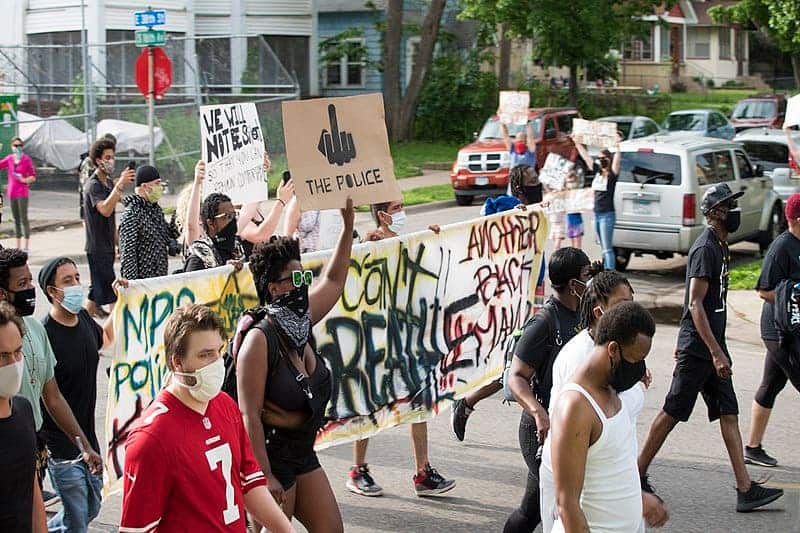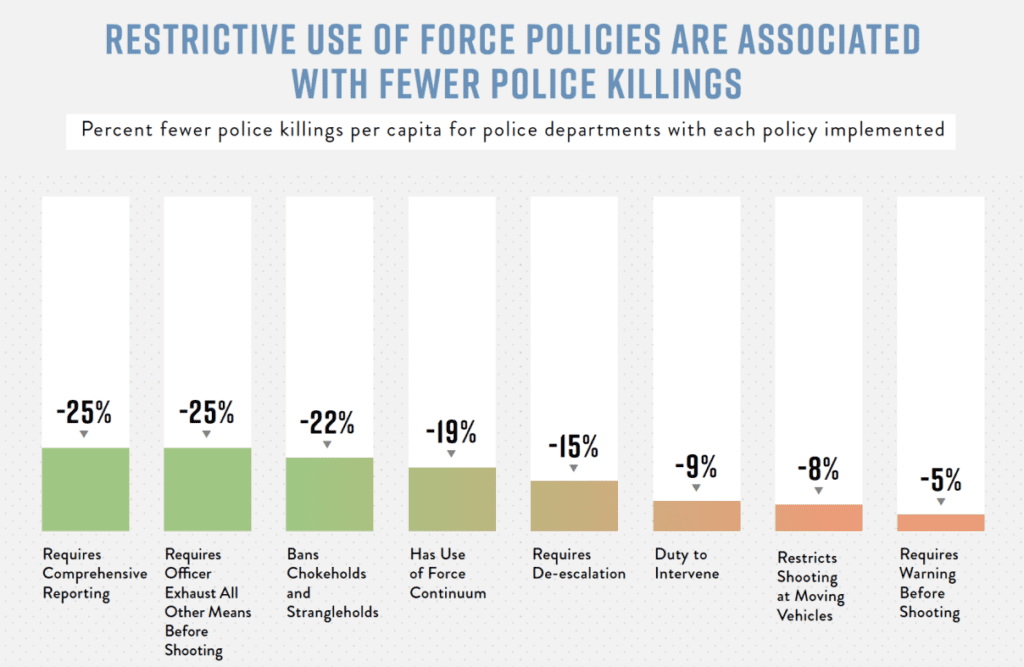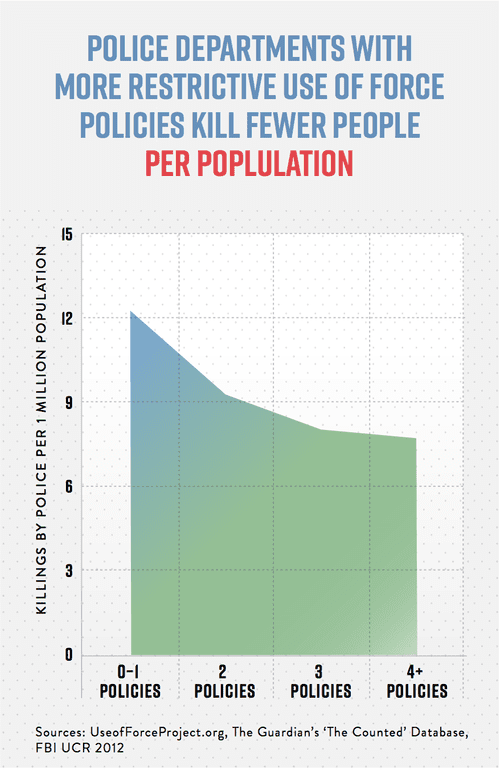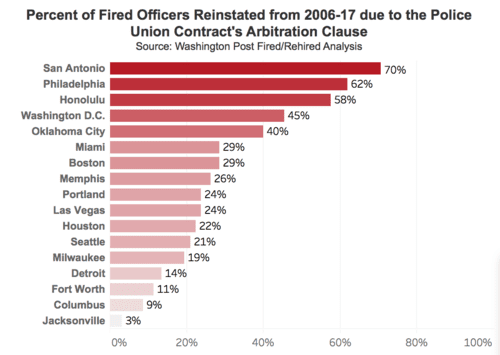
Police violence was responsible for the deaths of 1,099 people in 2019. There were only 27 days in the entire past year without a police killing. Black people accounted for 24% of those killed, despite making up only about 13% of the population, according to data compiled by research group Mapping Police Violence.
This year seems on track to be the worst one yet. According to the advocacy website Fatal Encounters, there have been 854 fatalities involving police officers in the United States, during the first five months alone.
Not one single day of 2020 has passed thus far without at least one police-related killing occurring. That’s just mind-bogglingly considering the country has also been under lockdown for many weeks due to the coronavirus, which dramatically reduced public interactions. Since 2000, the year Fatal Encounters has started keeping records, there have been 28,139 deaths involving police, of which African Americans made up 7,612.
“We’re getting significantly more people killed in police encounters this year,” the website’s founder, Brian Burghart, told DW. “It’s on track to be 1,978 [by the end of 2020] and our next highest number was in 2018 and that was 1,854.”
One could argue that the frightening nationwide protests inflamed by the brutal police killing of George Floyd in Minneapolis were bound to happen. Despite similar protests in the wake of a long string of unarmed black men killed by police in the past five years, there hasn’t been much progress — unless you count mounting public frustration. In fact, racial tensions and police violence are at the highest they’ve been in years.
However, research is providing valuable evidence as to what measures actually work (and what interventions fail miserably).
First, here’s what doesn’t work — more police training
The Minneapolis Police Department, associated with the death of George Floyd, was held up as a model of progressive policy reform. The officers have received training for implicit bias, de-escalation, mindfulness, and mental health crisis intervention. Moreover, the department also routinely employs body cameras to identify problematic officers and supposedly embraces community policing.
Yet this is the same department that is responsible for the killing of George Floyd, and dozens of other unarmed black men.
Writing in an op-ed for the New York Times, Philip V. McHarris, a doctoral candidate focusing on race, housing and policing, and Thenjiwe McHarris, a strategist with the Movement for Black Lives, highlight how such training and techniques do little to nothing to stop law enforcement-related violence and fatalities.
“The focus on training, diversity and technology like body cameras shifts focus away from the root cause of police violence and instead gives the police more power and resources. The problem is that the entire criminal justice system gives police officers the power and opportunity to systematically harass and kill with impunity,” the two McHarris wrote.
Body cams? Don’t count on those either
There is little evidence that suggests body cams — the most widely embraced tech for keeping police in check — actually works.
A 2019 study involving 2,224 officers of the Metropolitan Police Department in Washington, DC, randomly assigned body cameras to police officers, whose behavior was tracked for the next seven months. An analysis of administrative data showed that “cameras did not meaningfully affect police behavior on a range of outcomes, including complaints and use of force,” with the researchers concluding “that the effects of cameras are likely smaller than many have hoped.”
What seems to work: restricting police power
The Use of Force Project employed more than 30 years of research and record-keeping to track the use of force by the U.S.’s 100 biggest police departments.
There’s a great deal of variation in the degree of force encouraged or frowned upon, resulting in “wide variation in rates of police killings.”
The analysis looked at eight key policies meant to reduce police violence:
- Require officers to de-escalate situations, when possible, before using force.
- Use a Force Continuum or Matrix that define/limit the types of force and specific weapons that can be used to respond to specific levels of resistance.
- Restrict chokeholds and strangleholds (including carotid restraints) to situations where deadly force is authorized or prohibiting them altogether.
- Require officers to give a verbal warning, when possible, before using deadly force.
- Prohibit officers from shooting at people in moving vehicles unless the person poses a deadly threat by means other than the vehicle (for example, shooting at people from the vehicle).
- Require officers to exhaust all other reasonable alternatives before resorting to using deadly force.
- Require officers to intervene to stop another officer from using excessive force.
- Require officers to report both uses of force and threats/attempted uses of force (for example, reporting instances where an officer intentionally points a firearm at a civilian)
According to researchers affiliated with the Use of Force Project, for each of the 8 policies examined, police departments that had implemented the policy were less likely to kill people than police departments that had not.
Specifically, each additional use of force policy was associated with a 15% reduction in killings by police.
“The average police department would have 54% fewer killings and a police department with none of these policies currently in place would have 72% fewer killings by implementing all eight of these policies,” the analysis concluded.


The analysis also debunks the common objections raised by police departments who have refused to enact partly or all of these proposed policies, claiming such restrictive policies put officers at risk and endanger communities. In fact, the opposite seems to be true.
“Officers in police departments with more restrictive policies in place are actually less likely to be killed in the line of duty, less likely to be assaulted, and have similar likelihood of sustaining an injury during an assault,” the authors found.
“Moreover, our findings show police departments with more restrictive use of force policies have similar crime rates, including similar violent crime rates, as police departments with less restrictive use of force policies.”

Police aren’t military — but their military mentality may be fostering more violence
Men wearing camouflage, bullet-proof vests, and gas masks while marching with shotguns and M4 rifles, eventually peering outside of an armored vehicle. No, this isn’t some imagery from Kabul or some other war-torn area of the globe, but rather a common sight that protesters in the U.S. have now become accustomed to.
Police departments have become increasingly militarized thanks to the US Department of Defense 1033 program, which makes surplus military equipment available to state, local, and tribal law enforcement agencies (LEAs) at no cost.
Scholars have argued that this rise in police militarization will also cause a rise in aggregated law enforcement violence. The central argument is on the psychological mechanism known as the “Law of the Instrument”, which says that certain tools increase the likelihood that they will be used when other tools are more appropriate. In other words, when you hold a hammer, everything looks like a nail.
Besides access to military-grade weapons and equipment, police have also received military-style training, shifting police work to a militarized culture that is inherently violent.
“Most of these guys just like to play war; they get a rush out of search and destroy missions instead of the bullshit they do normally,” said a trainer quoted by Peter Kraska in his book Militarizing the American Criminal Justice System: The Changing Roles of the Armed Forces and the Police.
A 2017 study measured the effect of 1033 transfers on three dependent variables meant to capture police violence: the number of civilian casualties; the change in the number of civilian casualties; and the number of dogs killed by police.
The researchers found that the receipt of more military equipment increases both the expected number of civilians killed by police and the change in civilian deaths. “Moving from the minimum to the maximum expenditure values, on average, increases civilian deaths by roughly 129%,” the authors concluded after performing a series of statistical regressions.
“As for policy, our results suggest that implementing the EO to recall military equipment should result in less violent behavior and subsequently, fewer killings by LEAs,” they added.
Police union contracts hinder accountability
According to the Check the Police Project, police union contracts enforce the purging of misconduct records and even the reinstating of fired officers every 4-6 years when the police department’s accountability system is revised.
The analysis performed by data scientists affiliated with the project found 72 of 81 cities’ contracts included in the study and all 15 states with police bills of rights had imposed at least one barrier to police accountability. What’s more, “63 cities and 12 states had three or more provisions imposing barriers to accountability,” the study concluded.

Alternatives to policing like community watches and community projects reduce violence and murders
A 2017 study investigated the role that local nonprofit organizations played in the national decline of violence from the 1990s to the 2010s, when the national murder rate was roughly cut in half.
“Drawing on a panel of 264 cities spanning more than 20 years, we estimate that every 10 additional organizations focusing on crime and community life in a city with 100,000 residents leads to a 9 percent reduction in the murder rate, a 6 percent reduction in the violent crime rate, and a 4 percent reduction in the property crime rate,” the study concluded.
Examples of success stories identified by the study include the work of non-profits in South Central Los Angeles, which hired and trained formerly incarcerated residents to clean up sidewalks and maintain streets, build over 100 units of affordable housing in their community, and coordinated 57 block groups that monitored street alleys so they were not used for dumping or drug dealing.
Using non-police alternatives to 911 calls involving people with mental health problems
In 2018, there were 180,000 cases in New York City in which someone called 911 to report an “emotionally disturbed person,” yet police and/or Emergency Medical Services (EMS) were the default first responders. Most often than not, they had no special mental health training.
Intelligencer reports that NYPD 911 calls reporting “emotionally disturbed persons” nearly doubled over the last decade. Between 2015 and 2019, 14 mentally ill people have died at the hands of police in NYC.
But since 2018, the city is experimenting with triaging mental health calls that come through 911, so that the first responders have training in dealing with people with mental health problems. Since 2019, the NYPD has started dispatching co-response teams to emergency scenes in one of two precincts with a high number of 911 calls dispatchers say involve individuals experiencing a mental health crisis.
While the positive effects of co-response teams in NYC are still unclear, research suggests that co-response teams can reduce arrests and emergency room visits as well as repeat calls for service. A success story is that of Eugene, Oregon, where one in five 911 calls are diverted to mental health first responders rather than the police.
Time for change?
Virtually every major city in the United States is seeing mostly peaceful protests, a testament to the fact that Americans are deeply dissatisfied with police response, and their leadership at large. The bottom line is that these deep structural problems can be complicated, but their resolution is not hopeless. On the contrary, there are cities where police departments have made important policy changes, and this is reflected in fewer civilian casualties.
Many thanks to Samuel Sinyangwe, who provided references to research that supports sound policy meant to reduce law enforcement-related fatalities on his Twitter. You can find more studies, articles, and resources on what policies work and don’t work to curtail police violence at the Campaign Zero website.
[no_toc]



